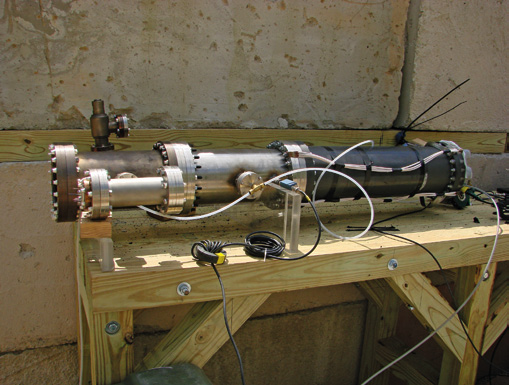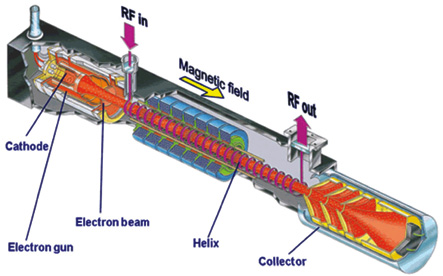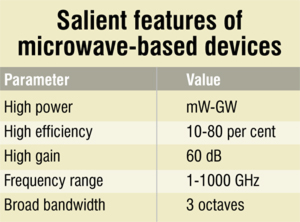
In 1904, J.A. Fleming introduced the vacuum tube diode. After the second world war, electron tubes were used to develop the first generation of computers but these computers were impractical due to the large sizes of the electronic components. In 1947, John Bardeen, Walter Brattain and William Shockley demonstrated the amplifying action of the firsttransistor at Bell Telephone Laboratories. They received a Nobel Prize for it.
Bipolar transistors and digital integrated circuits (ICs) were made fist. Analogue ICs, large-scale integration (LSI) and very-large-scale integration (VLSI) followed by the mid-1970s. A VLSI design consists of thousands of circuits on a single chip with transistors acting as on/off switches or gates between them. Transistors are good for low-power and low-frequency applications. Microcomputers, medical equipment, video cameras and communication satellites are all examples of devices made possible by using ICs.
From the day of invention of vacuum tube till today, when millions of transistors are fabricated on a single chip, technology has advanced a lot. But scientists are looking back at the microwave tubes for high-power and high-frequency applications because only these can handle high power (nearly 300 megawatts) at high frequency (nearly 1 GHz).
The term ‘microwave’ denotes the techniques and concepts used as well as a range of frequencies. Microwaves travel in matter in the same manner as light waves. These are reflected by metals, absorbed by some dielectric materials and transmitted through other materials without significant losses.

Many R&D centres in India are actively inrolved in the advancement of microwave tubes. These include:
1. Central Electronics Engineering Research Institute, Pilani
2. Central Scientific Instruments Organisation, Chandigarh
3. Central Glass and Ceramic Research Institute, Kolkata
4. Central Mechanical Engineering Research Institute, Durgapur
5. Bharat Electronics Ltd, Bengaluru
6. Vacuum Electronics Devices and Application Society
7. Microwave Tube Research and Development Center, Bengaluru
8. Center of Research in Microwave Tubes, BHU
9. College of Engineering and Technology, Moradabad
10. Institute of Plasma Research, Gandhinagar
11. Society for Advanced Microwave Electronics Engineering & Research, Mumbai
Microwave tubes have potential applications in radar, electronic warfare and communication systems. Air-traffic-controlradars, military radars, ground penetrating radars, imaging radars, UWB radars, cloud radars and space debris radars are some types of radars that use microwave tubes. Multi-beam jammers, phase-array jammers, and ultra-high-frequency and ultra-wide-bandwidth jammers used in electronic warfare also use microwave tubes. Clouds can be seen by microwave. These tubes play a role in climate forecasting and some medical applications (used in the diagnosis of hyperthermia) as well. Besides, microwave has its utilities for common man in the form of microwave heating and microwave protective gear/wall paper/furnishing.

Basic principle of microwave devices
The efficiency of conventional tubes is largely independent of the frequency up to a certain limit. When the frequency increases beyond that limit, several factors combine to rapidly decrease the tube’s efficiency. The high-frequency effects in conventional tubes are circuit reactance (inter-electrode capacitance, lead inductance), transit-time effect, cathode emission, plate-heat dissipation, power loss due to skin effect, radiation and dielectric loss.
[stextbox id=”info” caption=”Microwave devices”]Conventional devices. Klystrons, magnetrons, traveling-wave tubes, backward-wave oscillators and crossed-field amplifiers
New-generation devices. Cyclotron resonance devices (gyrotrons, gyro-TWTs and klystron-BWOs), Cerenkov radiation devices (magnetrons/BWOs/TWTs, orotrons, magnetically insulated line oscillators), Doppler effect-based devices (free-electron lasers, ubitrons, cyclotron auto-resonance masers), space-charge devices (virtual cathode oscillators) and multi-beam devices[/stextbox]
Tubes that are efficient in the microwave range usually operate on the theory of velocity modulation. The microwave tube uses transit time in the conversion of DC power into radio-frequency power. The interchange of power is obtained by using the principle of electron velocity modulation and low-loss resonant cavities in the microwave tube.
Velocity modulation is define as the variation in the velocity of a beam of electrons caused by the alternate speeding up and slowing down of the electrons beam. This variation is usually caused by a voltage signal applied between the grids through which the beam must pass. The directions of the electron beam and the static electrical field are parallel to linear beam tubes. Against this, the field sinfluencing the electron beam stand vertically by the electron beam at the crossed-field tubes.







